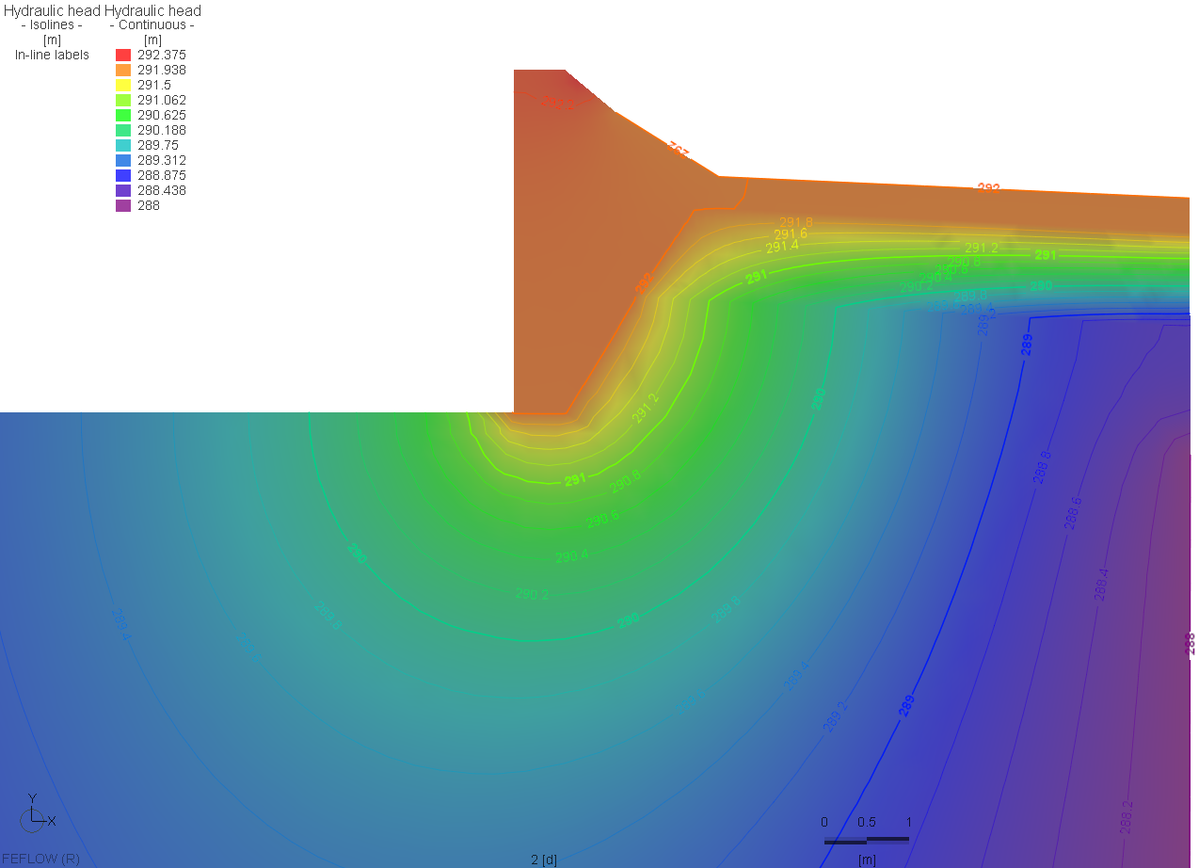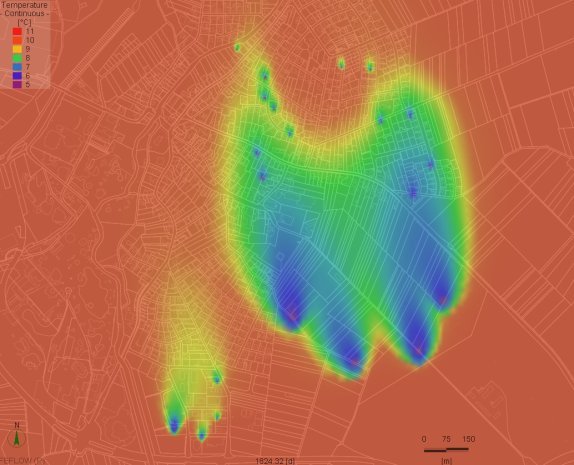Modeling
The Hydrogeology Department of the Institute of Applied Geosciences has many years of experience in numerical groundwater modelling for scientific and applied problems.
Mainly the software FEFLOW® from DHI-WASY is used for the simulation, which allows the calculation of groundwater flow, mass and heat transport in porous and homogeneously fissured media. In addition, MODFLOW applications and other software tools are used depending on the application.
Flow modelling
With the help of numerical flow models, the complex natural processes of groundwater flow can be simulated and the effects of interventions in the groundwater can be predicted. This applies, for example, to long-term prognoses in connection with interventions in groundwater during large construction projects or to questions concerning the extraction of drinking water from aquifers. Numerical models can be used here to make quantitative statements about sustainable production rates, expected groundwater levels or lowering amounts as well as inflow areas.
Mass transport modelling
The complex and partly reactive transport processes to which dissolved substances in groundwater are subject often proceed very slowly. Here, numerical models are the state of the art, especially with regard to long-term prognoses, e.g. of pollutant dispersion in groundwater contamination and contaminated sites, the effectiveness of remediation measures or the designation of protection zones based on residence times.
Heat transport modelling
The thermal use of groundwater is an economical and effective method for heating or cooling buildings. The storage of heat (e.g. process waste heat) in the ground is also playing an increasing role. In order to avoid conflicts of use with neighbouring plants, drinking water production or groundwater ecosystems, long-term forecasts are required as part of the legally prescribed approval procedures. These forecasts are calculated using numerical heat transport modelling. In addition to the geological and hydrogeological conditions, factors such as the optimal positioning of wells, usage temperatures and required delivery rates play an important role.
Please address your inquiries to Dr. Tanja Liesch


